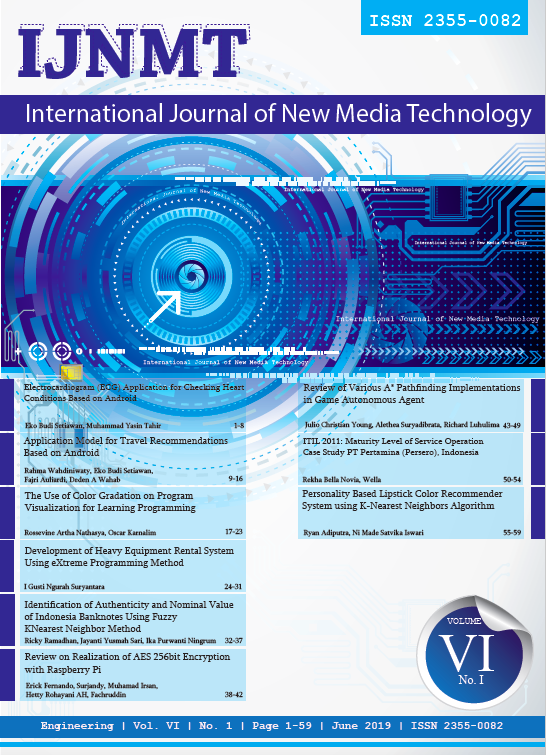The Use of Color Gradation on Program Visualization for Learning Programming
DOI:
https://doi.org/10.31937/ijnmt.v6i1.1040Abstract
According to several works, Program Visualization (PV) enhances student understanding further about how a particular program works. However, to our knowledge, no PVs utilize color gradation as a part of their features, even though color plays an important role in visualization. Therefore, two uses of color gradation on PV are proposed on this paper. On the one hand, color gradation can be used to display execution frequency of each instruction; instruction with higher execution frequency will be assigned with more-prominent color. Such piece of information is expected to help student for understanding program complexity. On the other hand, color gradation can also be used to display access frequency of each variable; variable with higher access frequency will be assigned with more-prominent color. Such piece of information is expected to help student for understanding program-to-variable dependency. Both uses are proved to be effective for learning programming according to our evaluation.
Index Terms”program visualization, color gradation, program complexity, program-to-variable dependency, computer science education
Downloads
Downloads
Published
How to Cite
Issue
Section
License
Authors retain copyright and grant the journal right of first publication with the work simultaneously licensed under a Creative Commons Attribution-ShareAlike International License (CC-BY-SA 4.0) that allows others to share the work with an acknowledgement of the work's authorship and initial publication in this journal.
Authors are able to enter into separate, additional contractual arrangements for the non-exclusive distribution of the journal's published version of the work (e.g., post it to an institutional repository or publish it in a book), with an acknowledgement of its initial publication in this journal.
Copyright without Restrictions
The journal allows the author(s) to hold the copyright without restrictions and will retain publishing rights without restrictions.
The submitted papers are assumed to contain no proprietary material unprotected by patent or patent application; responsibility for technical content and for protection of proprietary material rests solely with the author(s) and their organizations and is not the responsibility of the IJNMT or its Editorial Staff. The main (first/corresponding) author is responsible for ensuring that the article has been seen and approved by all the other authors. It is the responsibility of the author to obtain all necessary copyright release permissions for the use of any copyrighted materials in the manuscript prior to the submission.















